Need Help? We are right here!
Need Help? We are right here!
Thanks for your Enquiry. Our team will soon reach out to you.
If you don't hear from us within 24 hours, please feel free to send a follow-up email to info@xecurify.com
Search Results:
×miniOrange strengthens the security of VMware Horizon 2-factor Authentication (2FA) or VMware Horizon View MFA . This advanced approach requires not only your regular password but an additional piece of information it's like having a second lock on your Horizon account, making it exceptionally tough for unauthorized access.
miniOrange seamlessly integrates this added security layer into the VMware Horizon login process. Even if someone discovers your password, they can't get in without the second level of authentication, which can be generated by tools such as Google Authenticator. This extra layer of security, known as VMware Horizon MFA or VMware Horizon Two-factor authentication helps ensure your sensitive data stays well-protected in line with the latest security standards.
Be Cyber Insurance compliant with miniOrange MFA solution. Read More
miniOrange offers free POC and help through a consultation call with our System Engineers to Setup Multi-Factor Authentication for VMware Horizon View VPN in your environment with 30-day trial.
For this, you need to just send us an email at idpsupport@xecurify.com to get free POC and we'll help you setting up our solution in no time.
miniOrange accomplishes this by acting as a RADIUS server that accepts the username/password of the user entered as a RADIUS request and validates the user against the user store as Active Directory (AD). After the first level of authentication, miniOrange prompts the user with 2-factor authentication and either grants/revokes access based on the input by the user.

miniOrange provides user authentication from various external directories such as miniOrange Directory, Microsoft AD, Microsoft Entra ID/LDAP, AWS Cognito and many more.
Can't find your Directory? Contact us on idpsupport@xecurify.com

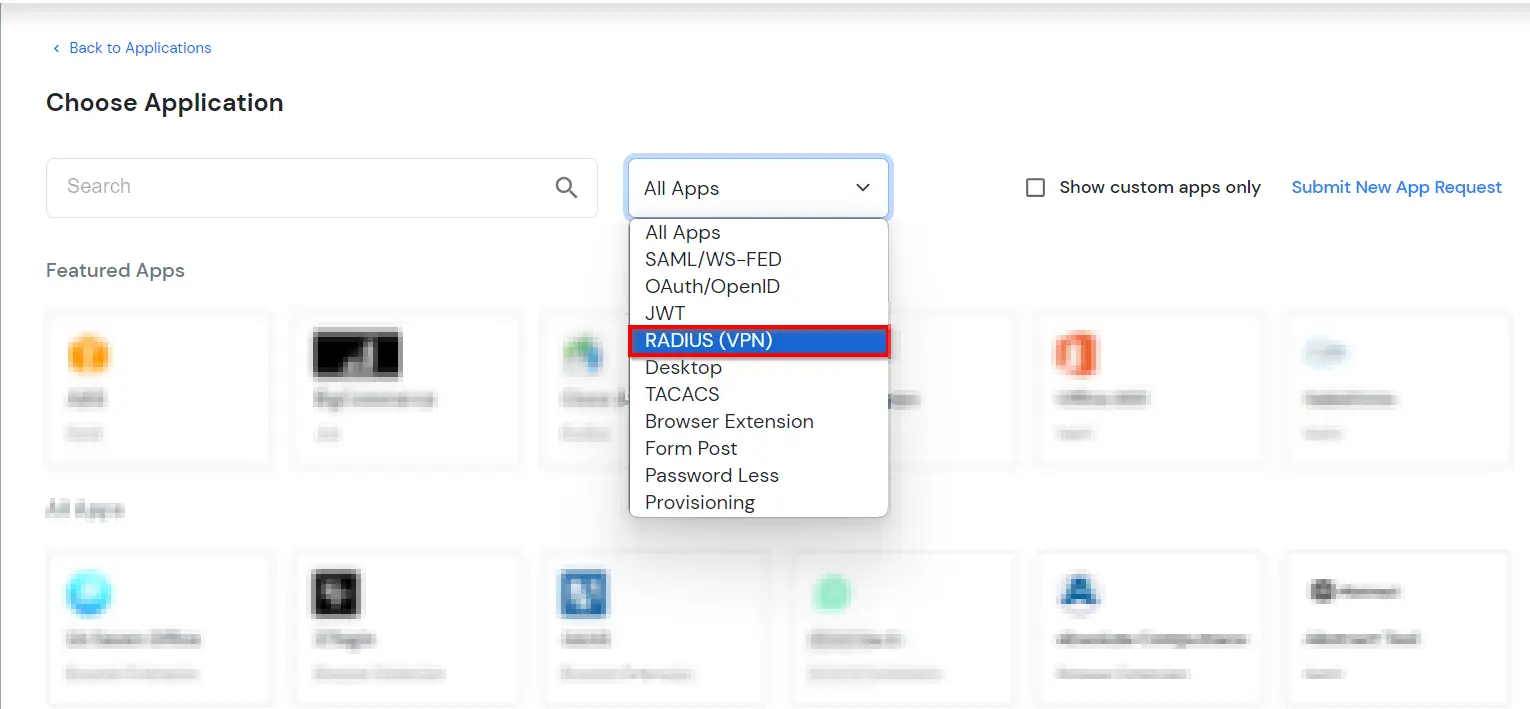
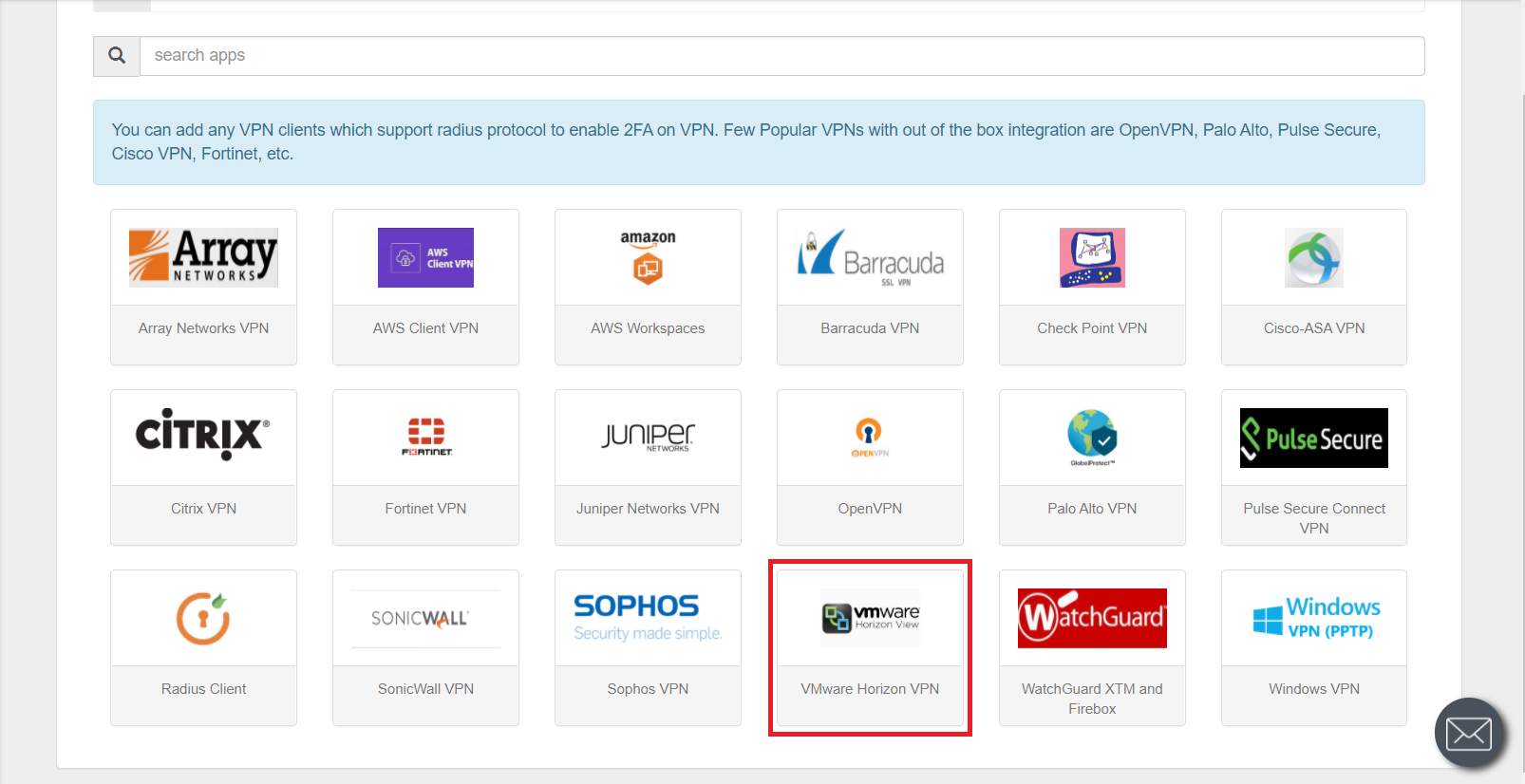
| Client Name: | Any name for your reference. |
| Client IP: | IP address of VPN server which will send Radius authentication request. |
| Shared Secret: | Security key. For Eg. "sharedsecret" (Keep this with you, you will need to configure same on VPN Server). |
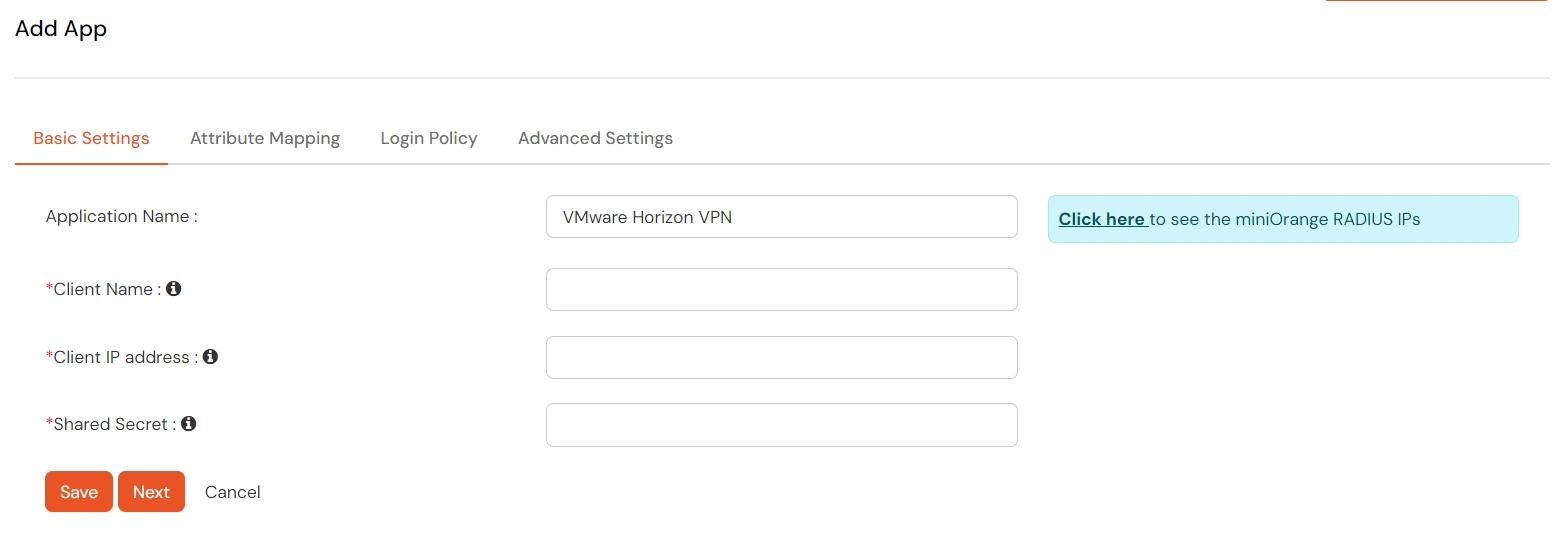
| Group Name: | Group for which the policy will apply. |
| Policy Name: | Any Identifier that specifies policy name. |
| Login Method | Login Method for the users associated with this policy. |
| Enable Two-Factor Authentication | Enables Second Factor during Login for users associated with this policy. |
| Enable Adaptive Authentication | Enables Adaptive Authentication for Login of users associated with this policy. |

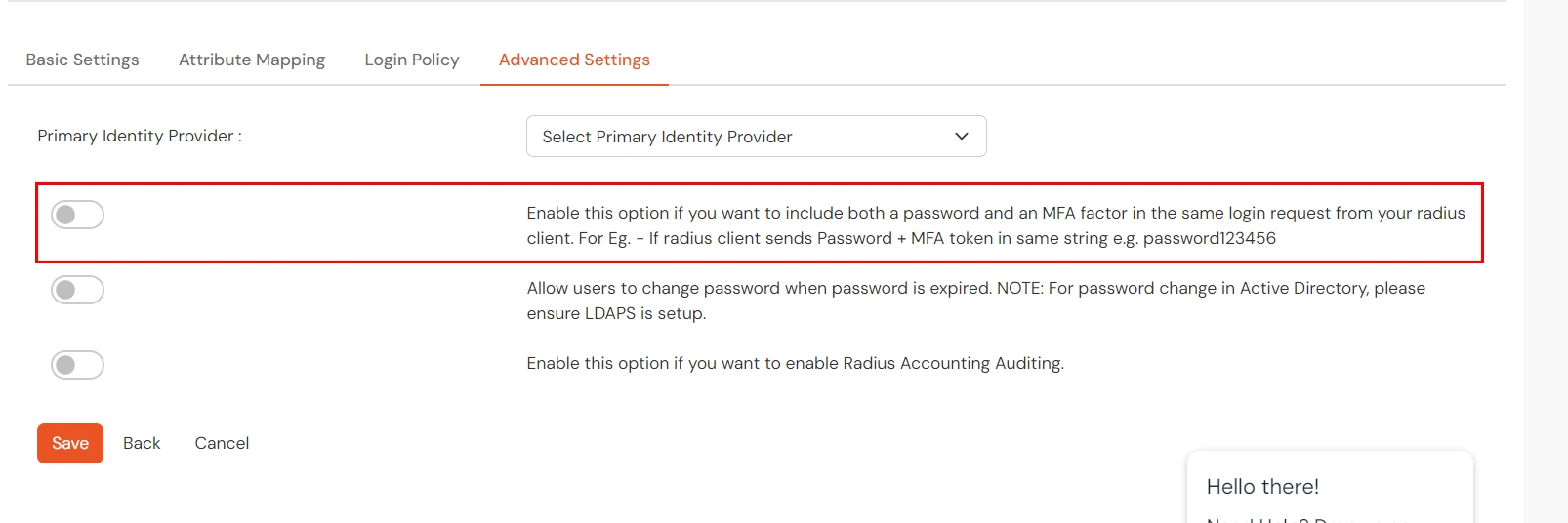
Only For On-Premise Version
Step 1: Open Firewall Ports.
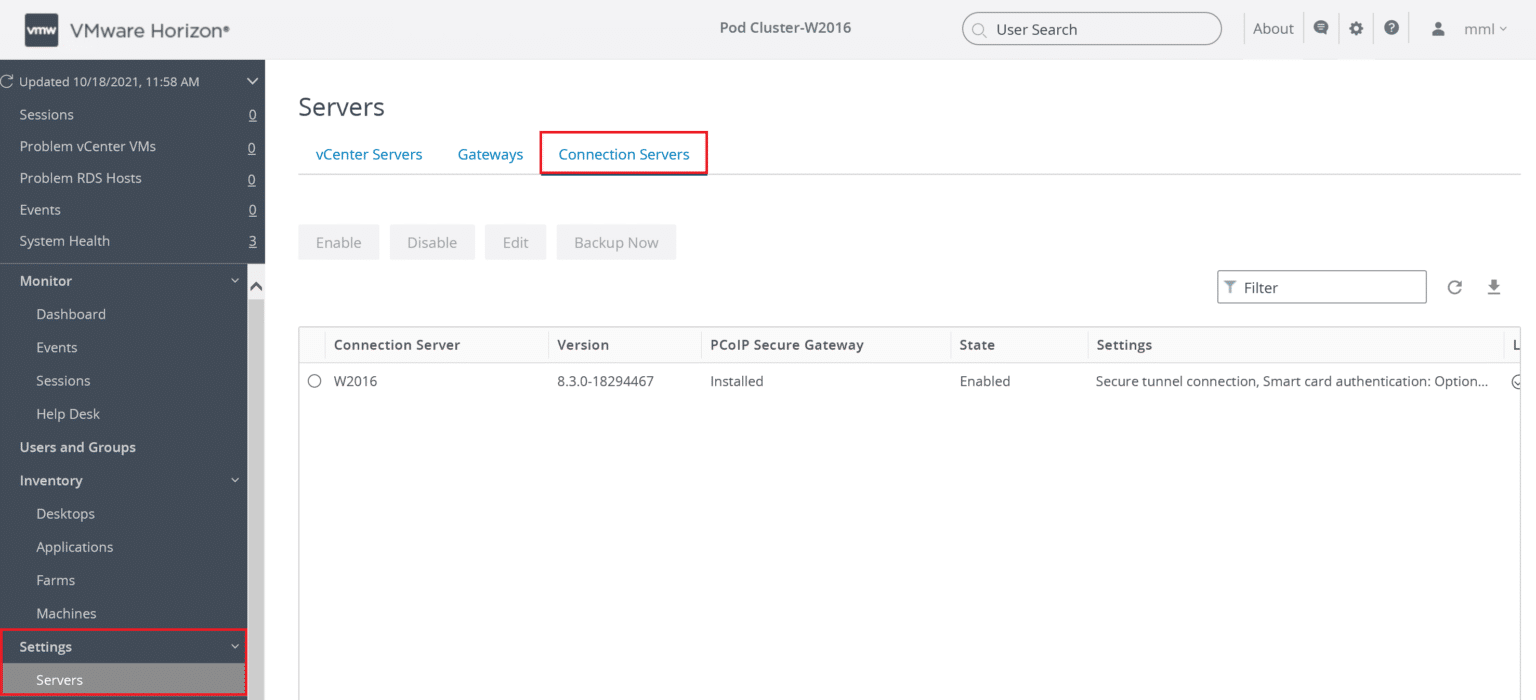

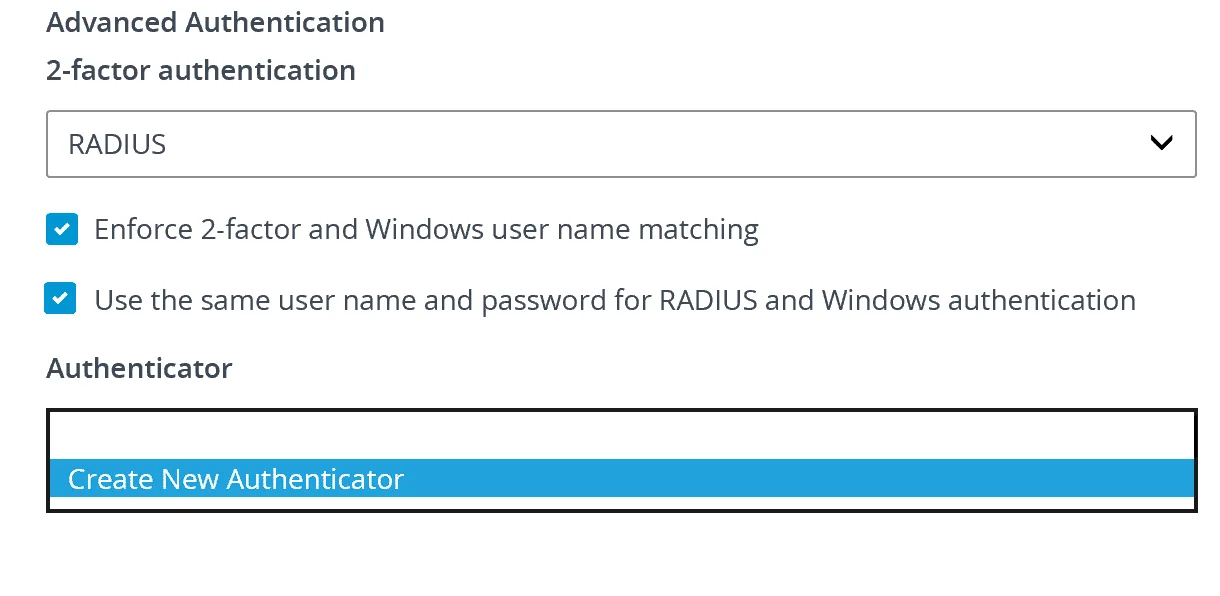
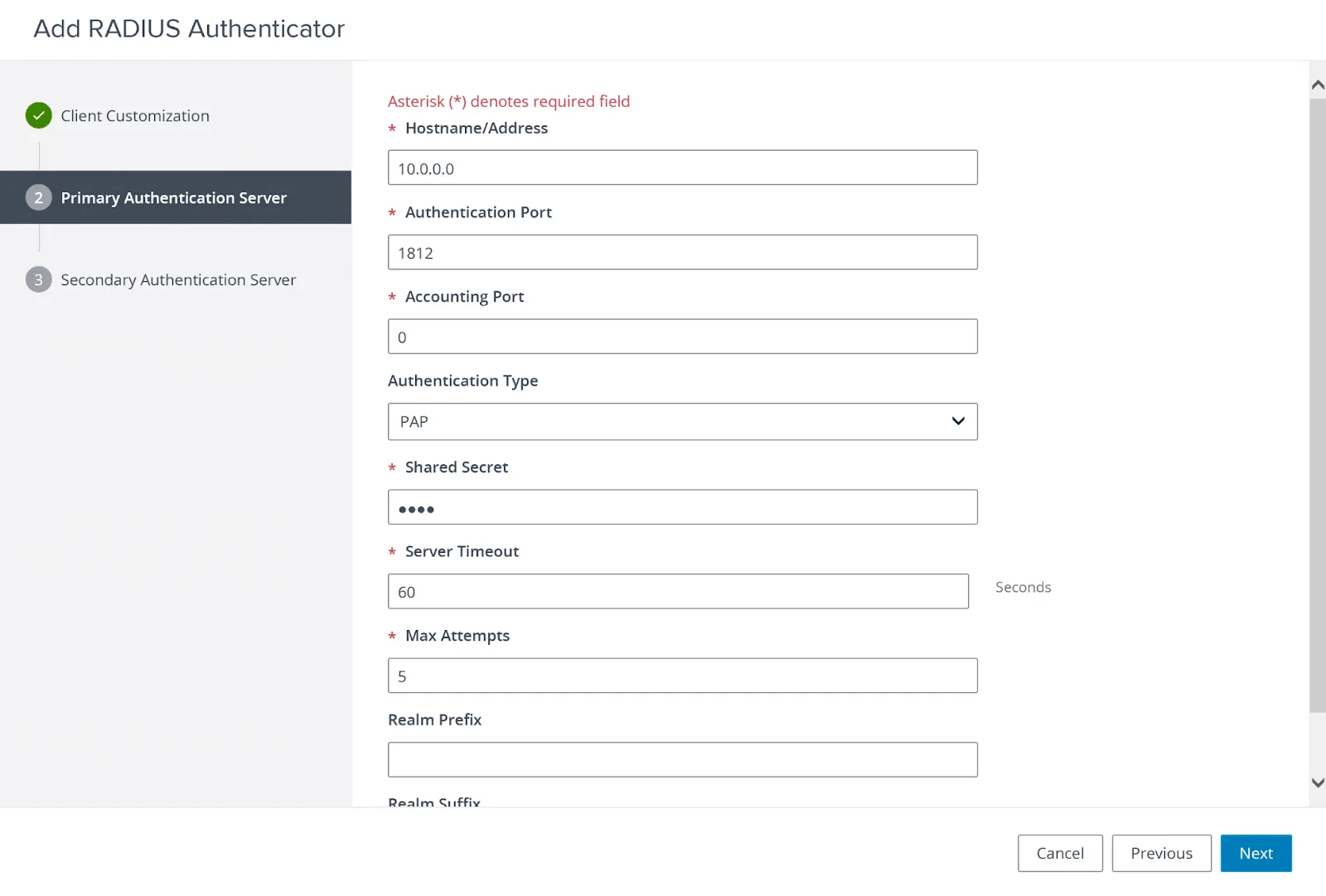
| Hostname/Address | Enter the IP address of your miniOrange Authentication Proxy. |
| Authentication Port | Set to 1812. |
| Accounting Port | N/A. Leave the default value. |
| Authentication Type | Select PAP. |
| Shared Secret | Enter the RADIUS_SECRET from miniOrange Authentication Proxy. |
| Server Timeout | Controls how long the RADIUS server may take to respond to an authentication request. Set to 60. |
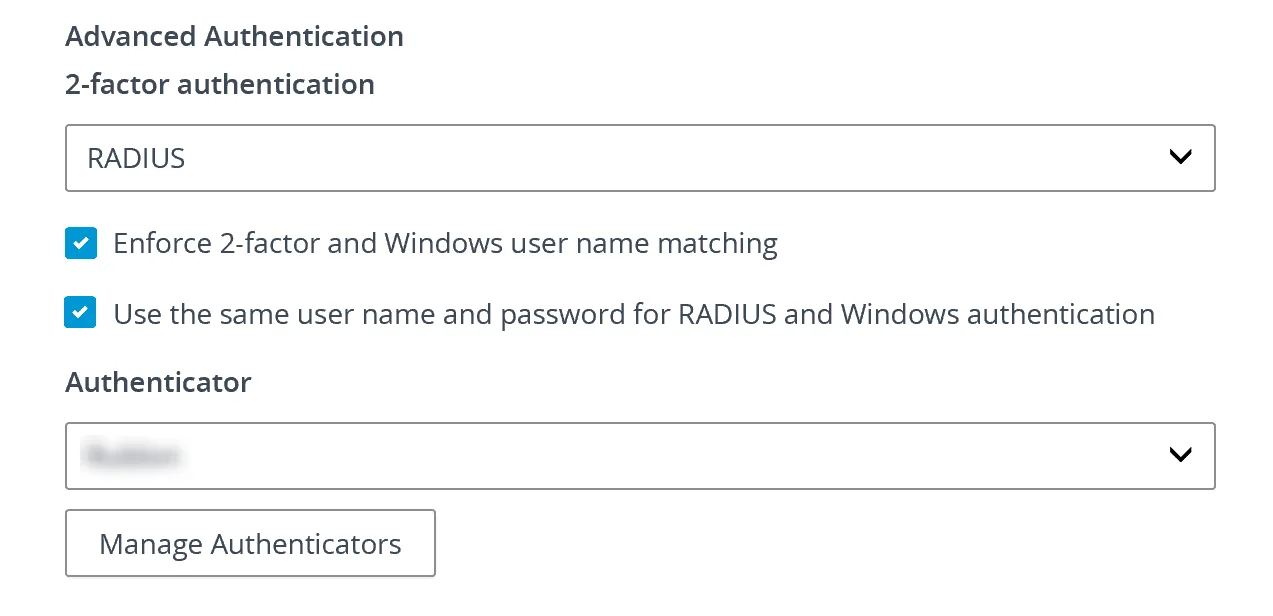
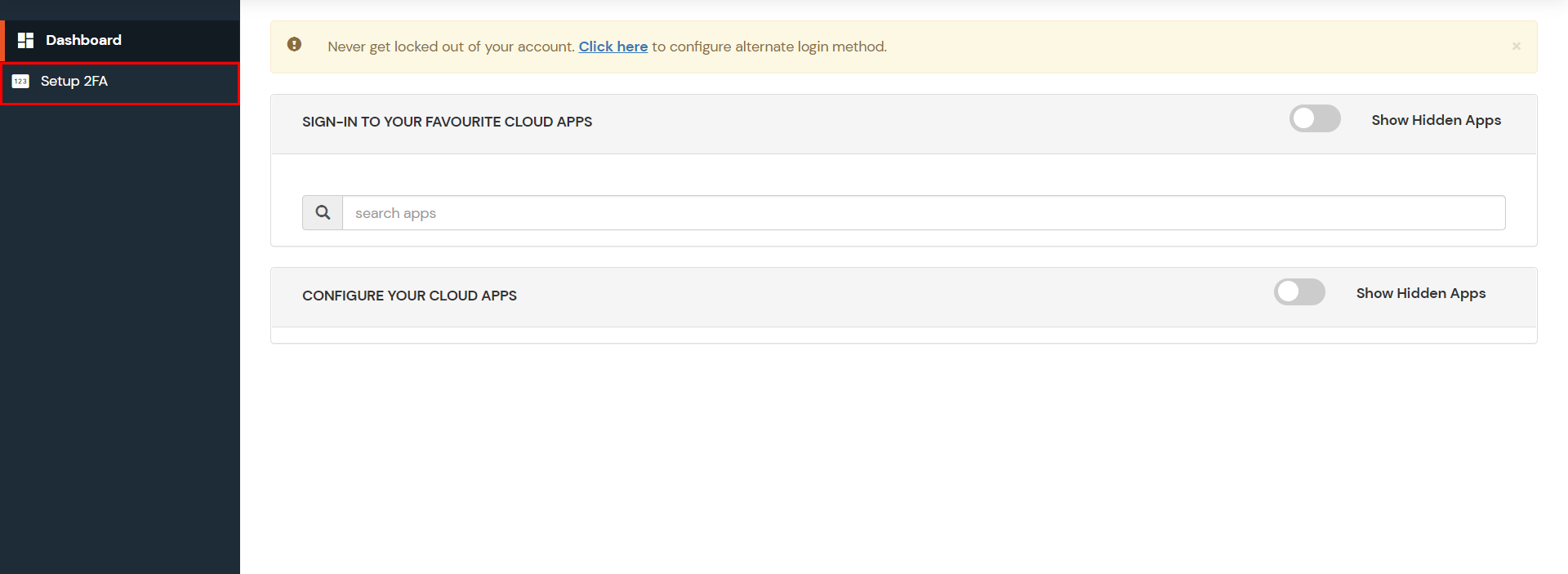
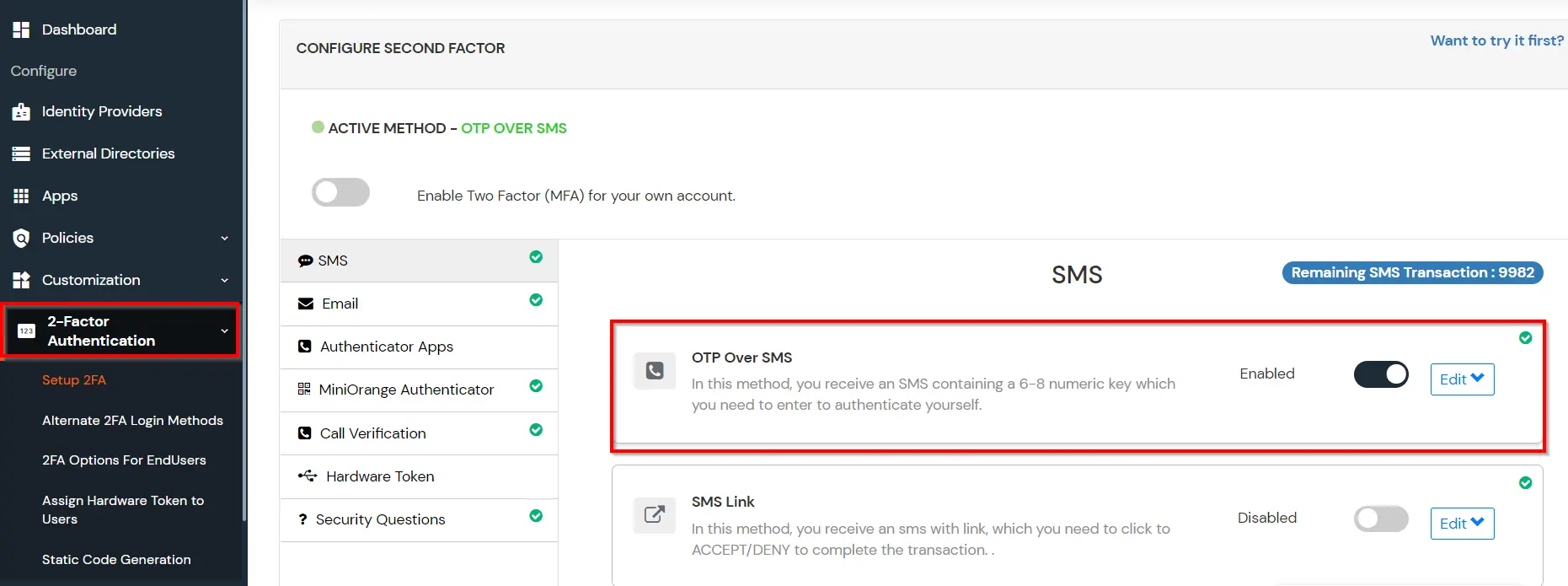
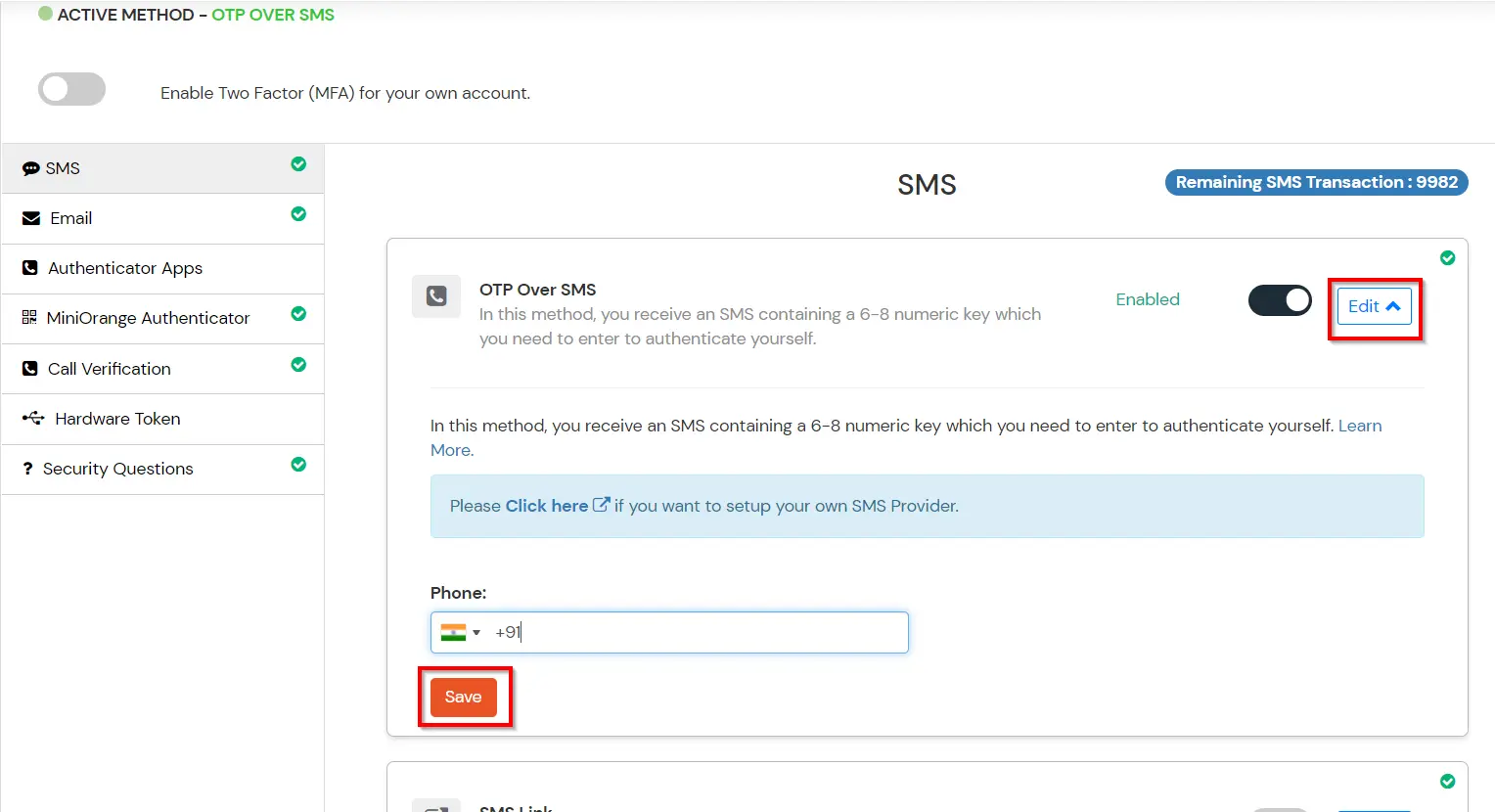
miniOrange provides user authentication from various external sources, which can be Directories (like ADFS, Microsoft Active Directory, Microsoft Entra ID, OpenLDAP, Google, AWS Cognito etc), Identity Providers (like Okta, Shibboleth, Ping, OneLogin, KeyCloak), Databases (like MySQL, Maria DB, PostgreSQL) and many more. You can configure your existing directory/user store or add users in miniOrange.
1. Create User in miniOrange





2. Bulk Upload Users in miniOrange via Uploading CSV File.

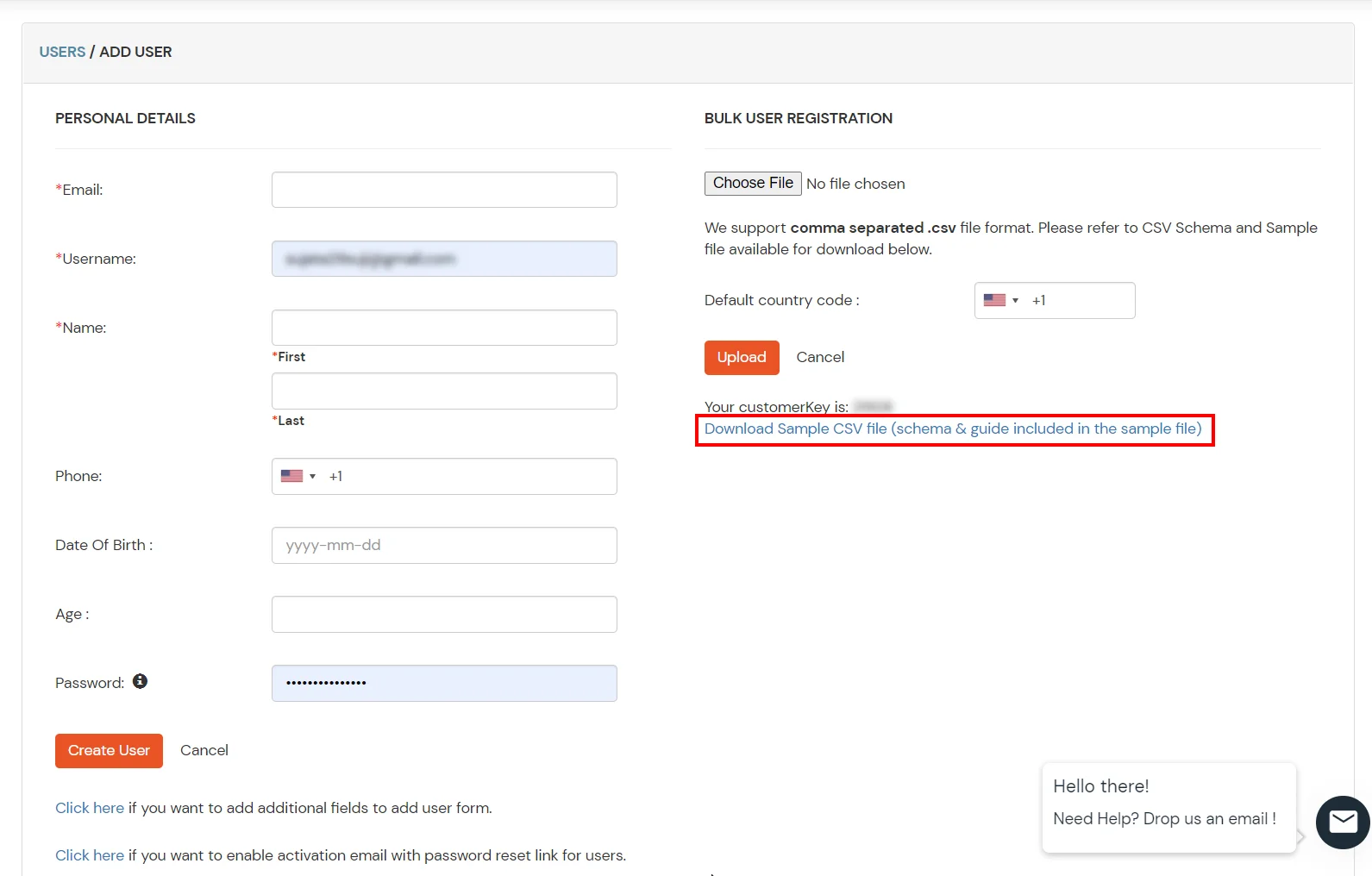
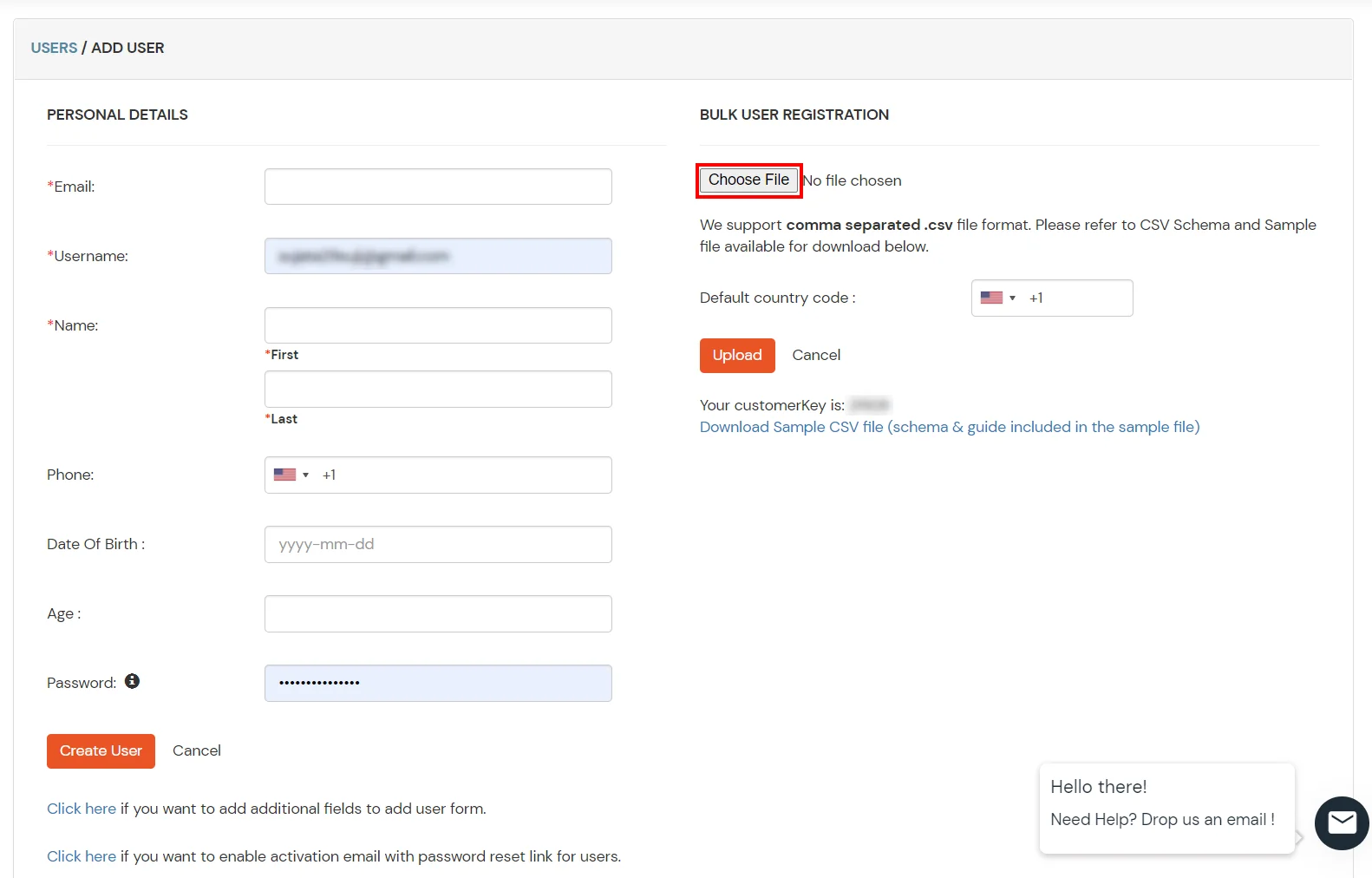




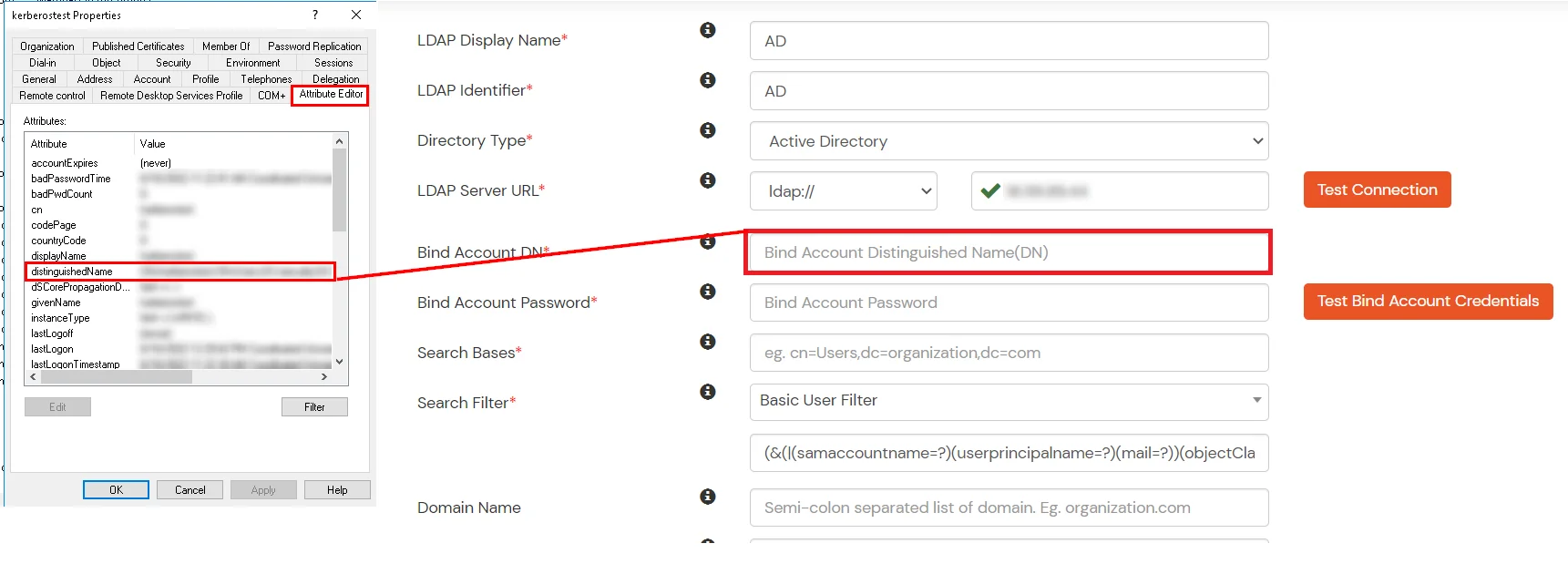




Here's the list of the attributes and what it does when we enable it. You can enable/disable accordingly.
| Attribute | Description |
|---|---|
| Activate LDAP | All user authentications will be done with LDAP credentials if you Activate it |
| Fallback Authentication | If LDAP credentials fail then user will be authenticated through miniOrange |
| Enable administrator login | On enabling this, your miniOrange Administrator login authenticates using your LDAP server |
| Show IdP to users | If you enable this option, this IdP will be visible to users |
| Sync users in miniOrange | Users will be created in miniOrange after authentication with LDAP |
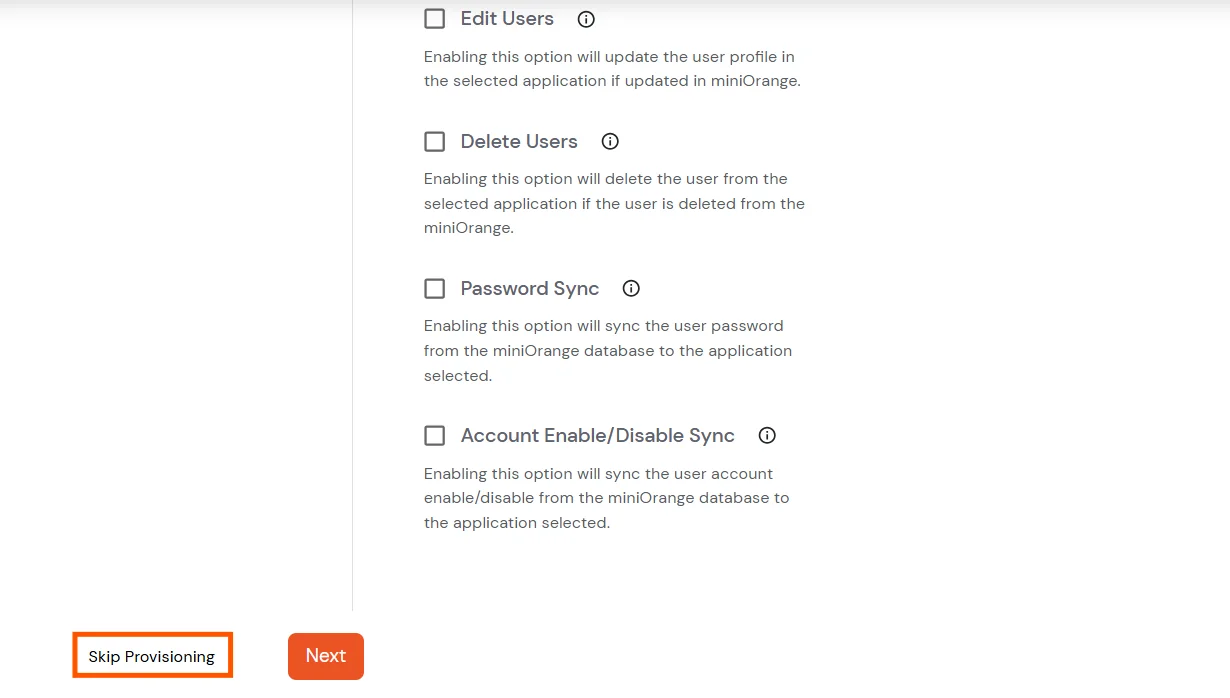
Attribute Name sent to SP = organization
Attribute Name from IDP = company
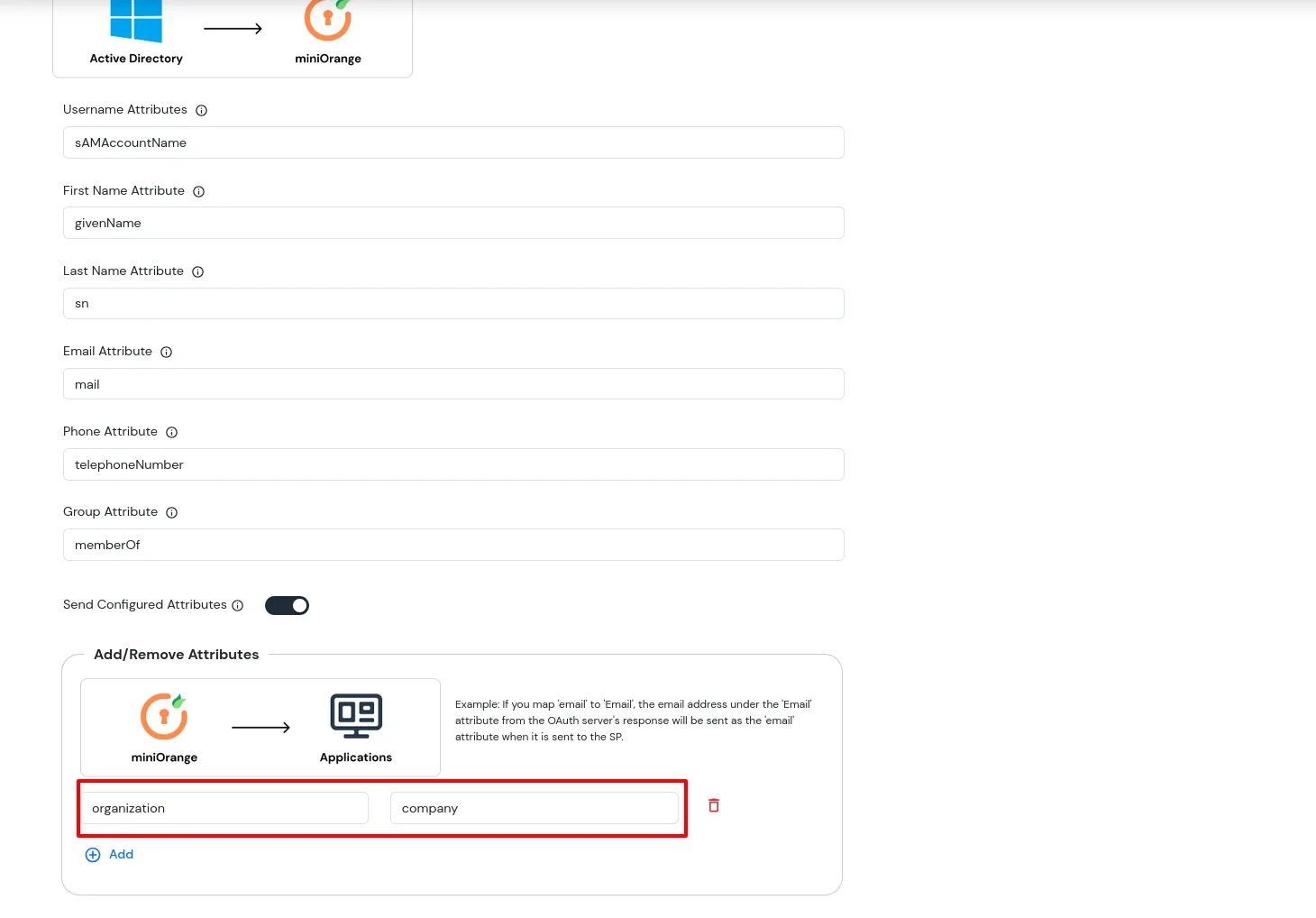






Set up AD as External Directory configuration is complete.
Note: Refer our guide to setup LDAP on windows server.
miniOrange integrates with various external user sources such as directories, identity providers, and etc.
Contact us or email us at idpsupport@xecurify.com and we'll help you setting it up in no time.
